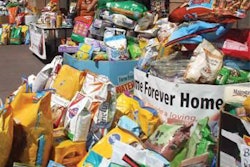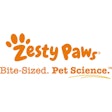
The discussions both for and against a raw petfood diet are long-familiar to the industry. Proponents cite unmatched health benefits for pets and the way the diet simulates how animals would eat in the wild; while detractors point out the risk of pet illness, contamination and public health issues if proper food safety measures aren't taken. It's a complex issue, set to become even more complex due to the Food and Drug Administration's Food Safety Modernization Act.
Under the Act, all food manufacturers-both human and petfood-will likely be expected to develop and implement a written Food Safety Plan for review and approval by the FDA. These plans must include HACCP (Hazard Analysis and Critical Control Point)-based, validated interventions to eliminate and control harmful bacteria and other food safety hazards.
For the raw petfood industry, this means that their processes must be designed to eliminate harmful bacteria during the manufacturing process. Is the industry ready to meet such a challenge?
Raw petfood companies typically rely on two things to ensure the safety of their products, according to Dr. James Marsden, professor of food safety and security at Kansas State University. "They rely on interventions that are applied throughout the process that reduce the risk of pathogen contamination, and these may be things like treating trimmings with an antimicrobial solution, relying on their upstream suppliers to have interventions during the slaughter process and after the slaughter process," he said. "So there's a number of things that can be done that do in fact reduce the risk of pathogen contamination. Unfortunately they don't eliminate the risk, they just reduce the risk.
"And the other thing that they do, for the most part, is they rely on a test and hold system. So that when they prepare a product, they will test it, and if it turns out that it does not contain pathogens, by virtue of the test, then they'll ship it into commerce." Both methods have limitations, however, said Marsden. "The obvious one on the interventions is that it doesn't eliminate pathogens, it just reduces their presence," he said. "So they still oftentimes will slip through those interventions and still be present.
"The test and hold has a big limitation in that while microbiological testing is very precise and there are excellent methods out there, the problem is one of sampling. Even if a lot of product is sampled multiple times, there's a high likelihood that pathogens won't be detected even if they're there. And that's just a sampling issue. They're not uniformly distributed through that product, and oftentimes they're there in fairly low numbers. So it's difficult to design a sampling system that has a high level of confidence that it will find problems if they're there."
The FDA is looking for a food safety plan that includes comprehensive food safety systems, and Stella & Chewy's believes it's come up with a process that, in combination with several other technologies, will meet all the requirements-the high-pressure processing method. The raw petfood manufacturer has been using the method since 2007 to treat its raw products to eliminate pathogen contamination and still maintain their raw character with the same effective kill of bacteria that you would find in a pasteurization technology.
In addition to using high-pressure processing, Stella & Chewy's employs a UV technology that creates antimicrobial conditions in addition to the germicidal properties of UV, so that operations like grinding, patty-making and even packaging can be done without any concern of environmental contamination because pathogens are systematically destroyed in the environment when this technology is operating. This state-of-the-art food processing system that combines with high-pressure processing results in a pathogen-free finished product, and the whole system together has been patented by the company.
High-pressure processing is a solid solution for passing the FDA's upcoming scrutiny, according to Marie Moody, founder and president of Stella & Chewy's-one that she said she wishes more companies in the industry were using. Misinformation about the process, however, can make acceptance difficult. "The raw petfood industry is already a very small segment of the industry, and it gets a lot of attention because there's been tremendous growth and there's a lot of excitement around it," she said. "But, I think that it's actually these raw food companies, the smaller ones in particular, aren't using [high-pressure processing], and they're coming out with some misinformation and not citing things correctly, and they're actually harming the whole category. They're taking our only option and obliterating it."
Moody also said there might be some industry confusion around the Food Safety Modernization Act. "I think that some people think it's optional, that you can decide to comply or not," she said. "But that's not the case. If you want to produce petfood, you have to be in compliance. We really, I think as an industry, need to make sure that we are all in compliance with the Food Safety Modernization Act, because it's not only the manufacturers that are impacted, it's also the retailers. Because the retailers have put money behind educating people on the benefits of raw food diets, and we need to be a viable and sustainable industry."
The FDA's Food Safety Plan initiative isn't by accident, according to Marsden. "The FDA knows exactly what they're requiring, and I think they're putting forth a system that will greatly improve the safety of food in the US," he said. "It's a conscious effort on their part to make sure that every food company—human food, petfood and even products produced in other countries—meet a very high standard for food safety."
Raw petfood poses a special challenge, but even petfood products that have a kill step are going to have to manage recontamination risk. "And I would say most, if not all, of the recalls that we've seen in kibbles and other petfood products are because they've been recontaminated," said Marsden. "So the whole petfood industry is going to be looking at comprehensive food safety systems to not only make sure that the product is pathogen-free during processing, but also that recontamination doesn't occur all the way into the package."
So, is the raw petfood industry set up to properly meet the FDA's requirements? Members of the North American Raw Petfood Association (NARPA) are doing everything right, according to President Melinda Miller. They have HACCP plans in place, operate in facilities that produce human food, utilize a variety of advanced pathogen treatment and testing during the manufacturing of their products, and employ test and hold distribution. "NARPA companies already meet or exceed most of the [Food Safety Modernization Act] requirements, and, by using test and hold distribution for many years now, they have been operating at higher food safety levels than most of the companies producing dry/canned pet foods," said Miller.
But it's important to recognize that not all raw diets are the same, and the industry shouldn't paint them with the same broad strokes. "As the popularity of raw diets grow, more and more of these small manufacturers emerge," said Miller. "While some are doing a good job of basic food safety, others are doing little to nothing in the way of food safety. None of these non-NARPA companies are using [high-pressure processing] or utilizing test and hold distribution. These non-NARPA companies are the ones that are likely to be involved in some problematic, raw diet 'event'."


















